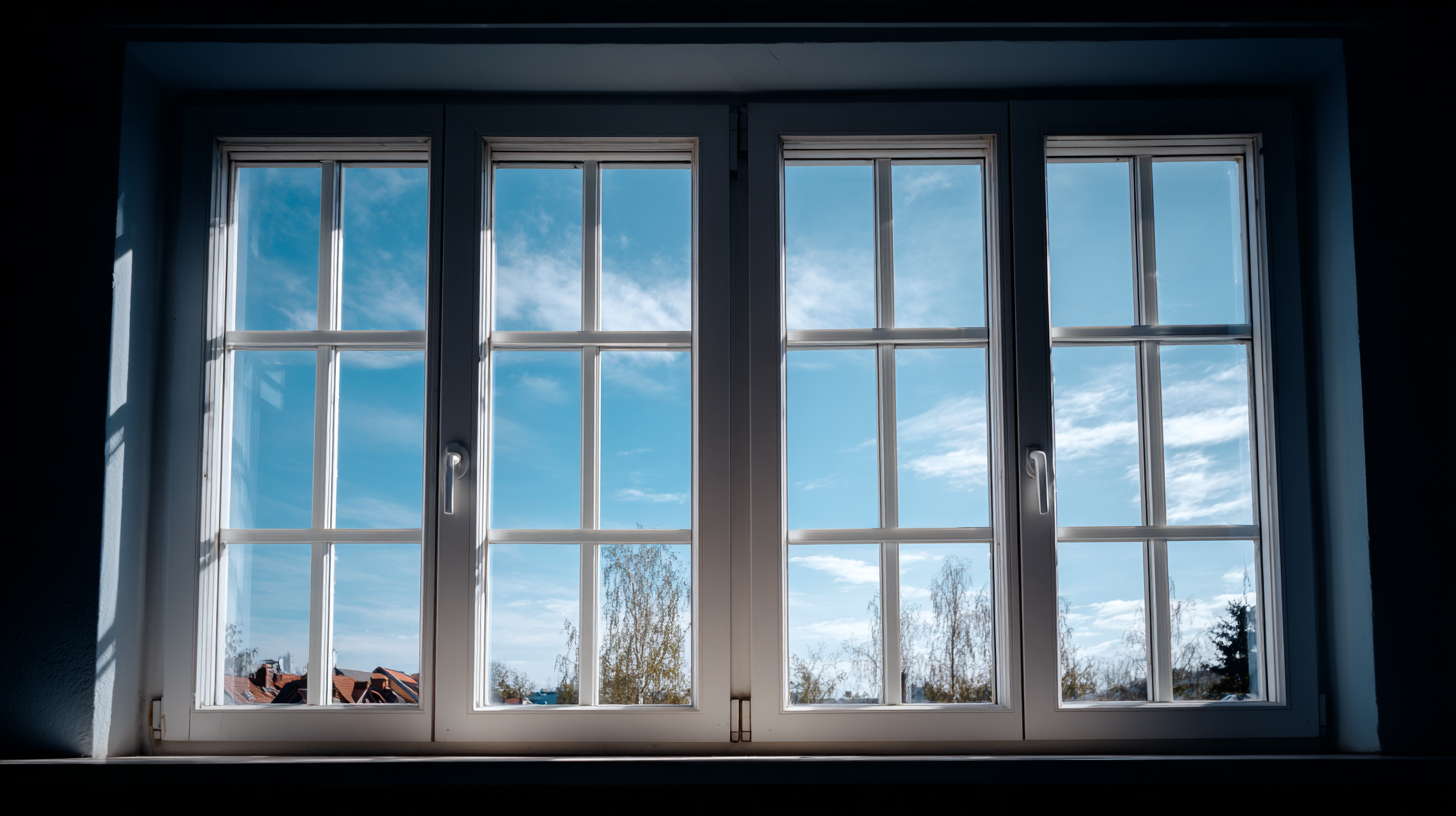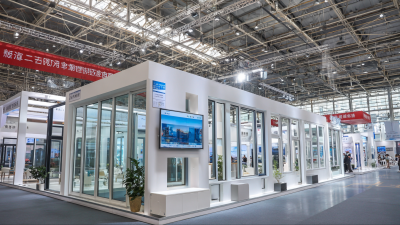How to Choose Energy Efficient Windows for Your Home in 2025
In the pursuit of sustainable living and energy conservation, choosing energy efficient windows has emerged as a critical decision for homeowners in 2025. According to the U.S. Department of Energy, windows account for approximately 25-30% of residential heating and cooling energy use. Consequently, opting for windows with superior energy performance not only enhances indoor comfort but significantly reduces household energy expenses and carbon footprints. As the market evolves, various certifications like ENERGY STAR® have established benchmarks for performance, guiding consumers in selecting windows that align with their energy efficiency goals.

Moreover, the 2025 landscape shows a growing trend towards advanced technologies in window design, including low-emissivity (Low-E) glass and insulated frames. The National Fenestration Rating Council (NFRC) indicates that energy efficient windows can save homeowners between $126 and $465 annually on energy costs compared to single-pane windows. With such substantial financial and environmental benefits, making informed choices about energy efficient windows is more vital than ever. As we delve into the factors shaping these decisions, understanding the latest technologies and energy ratings will empower consumers to make choices that not only comply with contemporary efficiency standards but also contribute to a greener future.
Table of Contents
[Hide]
Understanding Energy Efficiency Ratings for Windows
When selecting energy-efficient windows for your home, understanding energy efficiency ratings is crucial. These ratings provide valuable insights into how well a window can insulate your home, thereby reducing energy consumption. The National Fenestration Rating Council (NFRC) certifies windows with labels that display key metrics, such as U-Factor, Solar Heat Gain Coefficient (SHGC), and Visible Transmittance (VT). A lower U-Factor indicates better insulation, while SHGC measures how much solar heat enters your home—a lower value is preferable for warmer climates. Visible Transmittance quantifies the amount of natural light that passes through the window, impacting the overall comfort and brightness of your living space.
In addition to these ratings, it's important to consider the type of frame and glazing used in the window. Frames made of vinyl, wood, or composite materials can significantly affect thermal performance. Double or triple glazing with low-emissivity (low-E) coatings can enhance insulation while reducing heat transfer. Choosing windows that excel in these ratings not only contributes to energy efficiency but can also lead to long-term savings on heating and cooling costs. By focusing on these energy efficiency indicators, homeowners can make informed decisions that will benefit their comfort and the environment for years to come.
Key Features to Look for in Energy Efficient Windows
When selecting energy-efficient windows for your home in 2025, there are several key features to consider. First, look for windows with a high Energy Star rating, which indicates superior energy performance. Ensure they have double or triple glazing, as multiple layers of glass provide better insulation by reducing heat transfer. Low-emissivity (Low-E) coatings on the glass can further enhance efficiency by reflecting infrared light while allowing visible light to pass through, keeping your home cooler in summer and warmer in winter.
Another essential feature to check is the window frame material. Options like vinyl, fiberglass, and wood composites offer excellent thermal insulation, reducing energy loss. Ensure that the windows are adequately sealed, with weather stripping and tight-fitting sashes that minimize drafts. It's also beneficial to evaluate the window’s U-factor, which measures the rate of heat transfer; lower U-factor values signify better insulating properties. By focusing on these elements, homeowners can make informed choices that not only enhance comfort but also contribute to energy savings in the long run.
| Feature | Description | Benefits | Energy Star Rating |
|---|---|---|---|
| Multi-Layer Glass | Windows with two or three panes of glass. | Improves insulation and reduces energy costs. | Up to 0.30 |
| Low-E Coatings | A thin layer applied to glass to reflect heat. | Helps to keep homes cooler in summer and warmer in winter. | Up to 0.25 |
| Gas Fills | Argon or krypton gas inserted between glass panes. | Enhances thermal performance and reduces heat transfer. | Up to 0.30 |
| Frame Material | Materials such as vinyl, fiberglass, or wood. | Provides durability and insulation. | Varies by material |
| Air Leakage Rating | The amount of air that can pass through the window. | Lower ratings mean less air infiltration and better efficiency. | Up to 0.10 |
Comparing Window Materials: Vinyl, Wood, and Aluminum
When selecting energy-efficient windows for your home in 2025, it's crucial to compare the three most popular materials: vinyl, wood, and aluminum. Each material offers distinct benefits and drawbacks that can significantly affect energy performance. According to the U.S. Department of Energy, vinyl windows have a lower thermal conductivity compared to aluminum, often leading to a higher energy efficiency; they can reduce heating and cooling costs by as much as 25%. This performance is largely due to vinyl’s ability to create a tight seal, minimizing air leakage.
Wood windows, although traditionally known for their aesthetic appeal, require regular maintenance to ensure energy efficiency. A study by the National Association of Home Builders noted that properly maintained wood windows can achieve similar energy ratings as vinyl and aluminum. However, wood's susceptibility to moisture can lead to insulation breakdown if not cared for, potentially diminishing their performance over time. Conversely, aluminum windows are highly durable and resistant to the elements. Still, they can be less energy-efficient due to higher thermal conductivity, making thermal breaks essential to enhance their energy performance. According to Energy Star, incorporating thermal break features can improve aluminum windows' energy efficiency by reducing heat transfer, but they will still generally trail behind vinyl in performance metrics.

Cost vs. Savings: Evaluating Your Energy Efficient Windows Investment
When considering the installation of energy-efficient windows in 2025, understanding the cost versus savings dynamics is crucial for homeowners. According to a study published by the American Council for an Energy-Efficient Economy (ACEEE), upgrading to energy-efficient windows can lead to energy savings of 7-15% of total home energy costs annually. With the average American household spending about $2,000 on energy each year, this equates to potential savings of $140 to $300 per year depending on your region and existing window efficiency.
While the upfront costs of energy-efficient windows can range from $300 to $1,000 per window, the long-term benefits often outweigh these initial investments. The U.S. Department of Energy reports that by improving window insulation and reducing air leakage, homeowners can recover their investment within 5 to 7 years through lower energy bills. Additionally, many energy-efficient windows qualify for federal tax credits or local rebates, further enhancing their financial viability. In the context of rising energy prices, investing in efficient windows not only enhances comfort but also may significantly boost overall property value, making it a sound financial choice for the future.
Energy Efficiency Savings vs. Investment for Windows (2025)
Future Trends in Window Technology for Enhanced Energy Efficiency
As we look toward 2025, the future of window technology is set to prioritize energy efficiency through innovative materials and designs. One of the most promising advancements is the integration of smart glass, which can adapt its transparency based on the sun's intensity and the temperature inside the home. This not only enhances comfort but also significantly reduces reliance on heating and cooling systems, allowing homeowners to save on energy costs while contributing to a more sustainable environment.
Another emerging trend is the use of advanced framing materials that better insulate homes. Companies are now experimenting with composites that outperform traditional materials in both durability and thermal performance. This shift not only minimizes heat loss but also offers homeowners greater longevity and lower maintenance needs. Additionally, the development of triple-glazed windows is expected to become more commonplace, providing superior insulation by creating multiple barriers against outdoor temperatures. These advancements in window technology will empower homeowners to create energy-efficient spaces that align with the rising standards of environmental consciousness in construction and home renovation.

Related Posts
-

Innovative Examples of Energy Efficient Windows Transforming Home Energy Performance
-

7 Secrets to Choosing the Best Energy Efficient Windows for Your Home
-

What are the Benefits of Choosing Energy Efficient Windows for Your Home
-

Driving Trends in Style Windows Industry at the 2025 China Import and Export Fair
-

Unlocking Energy Savings: Why Efficient Windows Are Essential for Modern Homeowners
-

Unlocking Home Aesthetics: The Impact of Style Doors on Property Value and Energy Efficiency